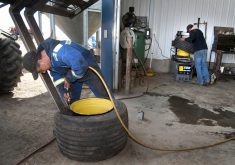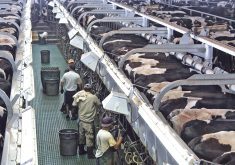The average price of a house in the Greater Toronto Area is now $1.34 million.
That nugget of data is well known to most Canadians, thanks to the endless media coverage on the cohort of 25-35 year-olds who cannot afford a home in Toronto.
The story is very familiar.
Read Also

Canadian farmers need new tools to support on-farm innovation
Farmers need a risk management buffer that actually works and investment that drives advancements forward if Canada is to build resilience.
A 29 year old is living in a suite above their parents’ garage, they have $15,000 in student debt and are frustrated with their lot in life.
The story is also told in a familiar way.
Toronto (or Vancouver) is presented as the only place to live and work in Canada. Young, urban adults have only one option – to suffer and complain (loudly) about real estate prices in Toronto.
Meanwhile, 2,300 km to the northwest, the average house price in Weyburn, Sask. is slightly cheaper.
In 2021, the median price for a single, detached home in southeastern Saskatchewan was $195,000.
That estimate comes from a creative and well-designed website – whynotweyburn.com
The website, managed by Weyburn Regional Economic Development, features nuggets of information on the amenities and opportunities in Weyburn.
Such as:
• The new Credit Union Spark Centre, which has an art gallery, pottery studio, an indoor track, mini gym, multi-use synthetic field, children’s play space and an outdoor ice surface.
• The available jobs in trades, agriculture, oil & gas, health care and other occupations in southeastern Saskatchewan
• Personal stories from people who moved to Weyburn from southern Ontario, Vancouver and elsewhere
Why Not Weyburn is a tremendous website and an outstanding slogan for a campaign.
It seems doubtful that it will convince thousands of young urbanites to leave Toronto or Vancouver for southeastern Saskatchewan.
But it could convince a few.
Bigger picture, this sort of campaign could be used on a much larger scale to address the labour crisis in the agriculture industry and in rural Canada.
Just before the May long weekend, Agriculture Canada released a ‘What We Heard’ report on the labour shortfalls in the ag and agri-food sector.
The report is a summary of online surveys and submissions from industry groups.
One of the key findings was that rural Canada has an image problem.
“Many (respondents) felt changing negative perceptions surrounding living and working in rural areas will create long-lasting benefits for the sector,” the report said. “Industry groups raised that improving services and infrastructure in rural communities would help tackle one of the main recruitment challenges — inability or unwillingness to move to a rural area.”
Agriculture Canada is continuing to work on its Agricultural Labour Strategy and the ‘What we Heard’ report mentioned that rural development is a possible solution.
That’s great, but the labour crisis Canada’s ag sector has been around for more than a decade.
Do we really need another report, strategy or survey to identify the problem and talk about potential solutions?
Most of the jobs in agriculture are in rural areas. If young urbanites or new immigrants don’t want to live in rural Canada, the labour crisis will persist.
Maybe it’s time for a ‘Why Not Agriculture’ campaign.
Or a ‘Why Not Rural Canada’ campaign, co-funded by the ag industry and federal government.
Not a two month effort, where $50,000 is spent on a website, a few billboards and bus bench advertising in downtown Vancouver.
More like a $20 million, 18-month campaign, which promotes the opportunities, careers and lifestyle possibilities in rural regions of Western Canada.
In addition, how about $300 million, federal government program – where young adults receive a $50,000 bonus if they’re willing to move to rural Canada and work in the ag industry for five years?
Yes, that’s a lot of money. And there’s no guarantee it will solve the labour shortage in agriculture or the people crisis in rural Canada.
But after a decade of surveys and 200-page reports on the issue, a bold plan and bold action would be a welcome change.
Weyburn can’t change the negative perceptions of rural Canada on its own.
A much broader effort with big, big dollars, will be needed.
Contact robert.arnason@producer.com
















